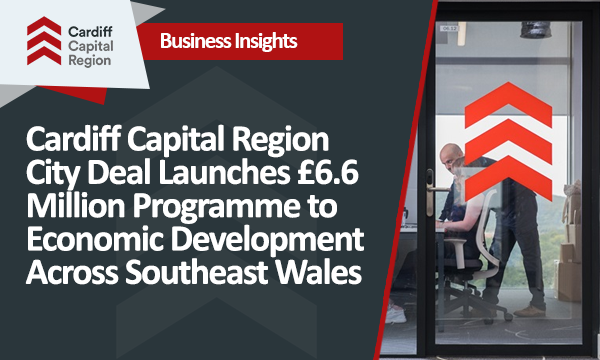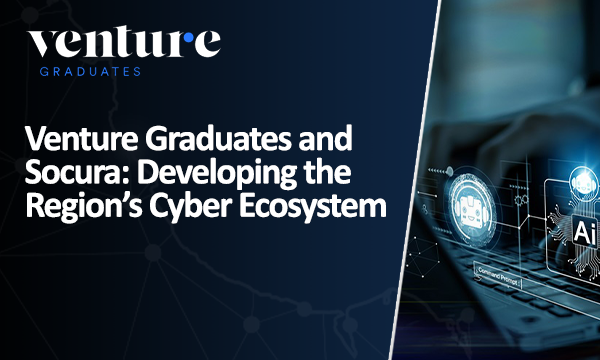Given the UK Government’s newly-launched commitment to “build back greener” on the foundations of Wales’ distinctive low-carbon and renewable energy resources, and in alignment with the Welsh Government’s decarbonised pathway towards a ‘Whole Energy System’, CCR is today launching a series of articles highlighting the work already being done, the huge changes ahead – and the undoubted opportunities we have to build a low carbon region where ‘prosperity for all’ is a very real possibility. In this first feature, we look at the ‘big picture’ that we face as a region, a country – and as a species.
In May 2021, global carbon dioxide emissions rose to 419 parts per million – the highest levels measured in the 63 years that data has been recorded. It means we have just experienced the fastest-ever 10-year average rate of increase in greenhouse gases, despite reductions in air travel and industry as a result of coronavirus – and today we are living in a world that is producing 50% higher emissions than the planet we inhabited at the beginning of the industrial age.
“We cannot afford to wait to act against climate change”
Prior to this month’s G7 Summit, Sir David Attenborough stated in the starkest terms that the world’s leaders are facing the most important decisions in human history as they seek to tackle climate change, with the naturalist warning that mankind may be on the verge of “destabilising the entire planet”. The conclusion seems very simple: we cannot afford to wait to act against the threat of climate change. Government, business, communities and every one of us must work together to protect our planet and our people – creating a greener, more resilient future for us all.
It’s worth noting that much is already being done in the UK, Wales – and indeed across the Cardiff Capital Region – to introduce the decarbonised energies and new ways of working that lie at the heart of a sustainable economy and society. This “race to zero” by 2050 is taking many forms and affecting everything we do and much of how we do it: from the way we warm our homes, power our workplaces, fuel our industry and distribute our goods, to the manner in which we grow our food, make our clothes and choose to travel. But there is zero room for complacency and so much more needs to be done, collaboratively and consistently, if we are to rebuild our everyday world on a renewed foundation.
The cold reality of global warming for our region
CCR is home to 1.5 million people and half the economic output of Wales, both of which mean that the programmes and initiatives being undertaken ‘here’ will have a significant bearing on how successfully (and how quickly) Wales and the UK transforms to a green economy and decarbonised way of life. So what do the realities of global warming mean for South East Wales, what are the targets we need to reach, what are the plans in place – and what are we already doing to achieve the ambition?
“Climate change and our response to it is creating a very different region”
Climate change and our response to it will create a very different region by 2050 – the date set to achieve a net-zero Wales. Following the Paris Agreement where the UK became legally-bound to reduce greenhouse gas emissions by 80% against a 1990 baseline – and the independent UKCCC advice that this needed to include a 95% reduction target for our own region – the Welsh Government was the first in the world to declare a climate emergency. The facts at hand show that by the mid-century rainfall in our region is projected to increase in winter by an average of 5% and decrease in summer months by 16%: resulting in a default seasonal pattern of both regular flooding and parched-earth droughts, with the summer average temperatures for our region predicted to increase by 1.34C and sea levels around Cardiff projected to rise by up to 24 centimetres.
“We need a 95% reduction in greenhouse gas emissions across the CCR by 2050”
The results of climate change can already be seen, with South East Wales recording its highest level of rain at 334.7mm in December 2015, while in April 2019 large parts of our region were left scorched after fire ripped through acres of land, with Professor Stefan Doerr from Swansea University likening the tinderbox conditions of the Brecon Beacons to those of the African Savannah.
The homes we live in are also a massive factor in the changes we face, with a report in July 2019 by the Decarbonisation of Homes in Wales Advisory Group saying that the 750,000 homes in South East Wales are responsible for 27% of all energy consumed across CCR. The report stated that our region has some of the oldest and least thermally efficient housing stock in Europe, recommending a 30-year “decarbonisation” of homes across CCR by the mid-century landmark – with every property following the ‘climate resilient’ standards of being low carbon, water and energy efficient – and all housing stock retrofitted to have a band A energy rating by the half-way point of this century.
The positive move towards zero-neutral
The positive news is that most if not all of our energy will be generated from green sources well before 2050, with policy experts at the Institute of Welsh Affairs (IWA) predicting that CCR could meet all of its energy needs from renewable energy sources by 2035, through energy provided by a blend of electricity and hydrogen produced by solar, offshore windfarm, tidal power, hydropower, geothermal and fusion energy. This will also deliver billions of pounds of extra GVA – the measure of goods and services produced in a sector – every year to our region; through programmes such as the Caerau mine-water project that is pioneering the use of an underground heat network to power homes, schools, hospitals and businesses in the Bridgend area.
“Most of our energy will be generated from green sources well before 2050”
The Caerau project is just one of many pilots and established green energy programmes being run across South Wales. Our region, along with the rest of Wales, is increasingly being seen as a key national hub for renewable energy, with major industries across South Wales joining forces as the South Wales Industrial Cluster (SWIC) to work together to radically reduce carbon emissions over the next 20 years, creating a sustainable plan for the region through a combination of; the production and distribution of hydrogen power, cleaner electricity production that uses carbon capture technologies, hydrogen-rich natural gas and large industry decarbonisation through fuel switching and the production of cleaner transportation fuels.
“The £40 million SWIC grant will enable South Wales to develop a tailor-made, industry-led strategic decarbonisation plan”
Over 10 megatons of carbon emissions were generated by businesses and industry in Wales last year and our region is currently the second largest emitter of greenhouse gases from industry in the UK – so the transition to sustainable, low-carbon industrial production techniques will be indispensable to us achieving the net zero targets. The £40 million grant from the UK Government to SWIC will see steelworks, oil refineries, cement works and chemical plants working alongside energy companies, ports, universities and local councils to create a ‘roadmap to net zero’ carbon emissions for all industries across southern Wales.
This roadmap will identify the resources and infrastructure needed for businesses to transition to a greener way of working – enabling us to undertake detailed engineering studies into hydrogen and carbon capture, utilisation and storage (CCUS) infrastructure and ultimately empower South Wales to develop a tailor-made, industry-led strategic decarbonisation plan. The SWIC jointly employs a workforce of over 100,000 people, and with the promise of further job creation estimated to be in the tens of thousands, the potential uplift in GVA can’t be overestimated.
Crucial Support from both UK and Welsh Governments
The UK Government has recognised that Wales is well-placed to play a central role in the global effort to reach net zero by 2050, committing a total of £90 million to innovative projects including £15.9 million for electric heavy vehicles to be made in Cwmbran, £7.9 million for district heating in Bridgend and Cardiff, £1.4 million for hydrogen transport technology and £36 million for the Active Building Centre project to transform the way the UK designs, constructs and operates buildings (one of the pioneering projects that we’ll be discussing in more depth during this series).
In addition, our region has the opportunity to benefit from further UK Government funding through avenues such as the £289 million Industrial Energy Transformation Fund, the £250 million Clean Steel Fund, the £240 million Net Zero Hydrogen Fund and the £1 billion Carbon Capture and Storage Infrastructure programme.
“The UK Government has recognised that our region is well placed to play a central role reaching net zero”
Both the UK and Welsh Governments have set their own ambitious plans for decarbonisation, with UKGov aiming to achieve net-zero carbon emissions by 2050 – and WelshGov looking to produce 80% of its energy needs through renewables by the same year. To achieve this, the Welsh Government’s Prosperity for All: A Low Carbon Wales plan pulls together 76 existing pieces of policy from across the Welsh Government, UK Government and the EU where decarbonisation is integrated either as a direct outcome or a wider benefit, with the next stage of the plan due to be published this year to cover the second carbon budget (2021-2026).
This plan has already set out Sector Emissions Pathways for Power, Buildings, Transport, Industry, Land Use, Agriculture, Waste and F-gases – looking at the sector ambition, emissions profile, actions to be taken and how the sector is contributing to well-being goals – and it’s clear that a holistic approach is needed to cut across and integrate many decarbonisation policies and programmes; a feat that will demand strong leadership and consistent collaboration from all sectors (and we’ll be exploring both of those critical success factors in our subsequent features in this series).
A Change That Will Transform Our Region – And The World We Live In.
If we achieve our decarbonisation ambitions by 2050, the Cardiff Capital Region will be one of the best places in the world to live, learn, work and do business. Our commercial sectors, third sector and public sector will have worked together to achieve the goals set out in the ground-breaking Well-being of Future Generations Act – hitting the target to reduce emissions by at least 80% against the 1990 baseline.
“CCR will be one of the best places in the world to live, learn, work and do business”
We will have thought more about the long-term, worked better together, taken early action and engaged with citizens on this journey to a low carbon economy and society. We will have conquered a multitude of complex challenges, creating quality jobs that are future-proofed for the globalised low carbon economy. We will have the right skills and opportunities in place to lift people out of poverty, whilst simultaneously improving their health and local environment. We will be a healthier, happier and more equal society, with an environment and communities that are more resilient than ever.
The change will be river deep and mountain high – reducing our emissions in part by changing the products we buy, use and produce, making different choices to those we made before, doing things differently throughout our daily lives, to secure a safe and prosperous future for ourselves and future generations. We will have been clear and consistent in shaping the region we want, through setting long-term frameworks that provide clarity and certainty for low carbon investment.
“The change will be river deep and mountain high”
There will be different energy systems, ready to fully exploit the inter-relationships and synergies between the power, heat and transport sectors.
There will be a clean and efficient public transport service, stimulating local industries, communities and economies.
There will be greater energy efficiency in buildings and appliances, through new building fabrics that turn buildings into power stations.
There will be localised production that harnesses more direct benefits to our local communities through sustainable skills, quality jobs and a greater retention of economic value.
There will be radically less waste, as we recover and regenerate in new ways, to create new products.
And there will be more detail in the features that follow – starting next week, when we explore how Cardiff Capital Region’s energy strategy is mobilising key streams across South East Wales.










